#sahel rose
Explore tagged Tumblr posts
Text
映画 「花束」
2024.10.06 上映会

ご来場ありがとうございました💐
泣いて。笑って。
色々な愛の形はある。
共に寄り添い、
共に花を咲かせて行きたい。

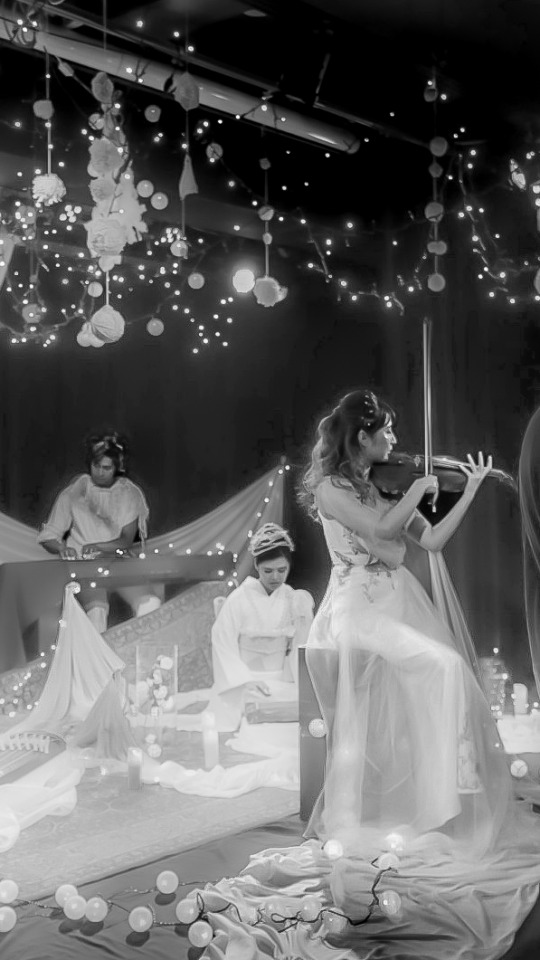
〜音楽の花束〜
2024.10.06 セトリ
💐Silent Night (Hanataba vers.)
💐すべての人の心に花を〜The Rose
💐You Raise Me Up
1.
映画で流れる一曲。アレンジさせて頂き��した。
サヘル監督からは「和」を取り入れたアレンジにしたいとのこと。お琴2台、エレキギター、キーボード、そして歌とヴァイオリンというユニークな編成で聖歌を表現。トークショーでサヘル監督がクリスマスへの思いについて語られました。施設でもクリスマスをお祝い。でも、親がサンタになるクリスマスは体験できない。他者との差を感じられる、クリスマス。
私はオーストラリアで育ったので、サーフィンするサンタさんと真夏のクリスマスのイメージがあるかもしれません。実際は、私にとって最も孤独な時期でした。お店は空いてない、ツリーも飾れない、プレゼントもない、友達と会えない。クリスチャン、カソリックにとって大事なクリスマスとかけ離れたところにいました。憧れなのか、昔から教会音楽が大好きで、サヘル監督と同様、クリスマスソングが好き。
そんな、クリスマスへの憧れと孤独さをアレンジで表現してみました。子供達が奏でられる、温もり溢れる音。どこかで切ない、冷たい音色。映画ではお芝居だけではなく、楽器も演奏されたキャスト。すごい!としか言えない。Bravi!

2.
6日は、いつもライブに来られるサポーターさんの姿も見られました。そんな皆さんにとっても、初めて聞く歌と演奏をお届け。「花束」に因んだ、お花をテーマにした選曲。喜納昌吉さんの名曲「花」と洋楽「The Rose」を一つにしたカリンバと歌のアレンジ。
「すべての人の心に花を」。平和の祭典にインスパイアされた、人生を語る一曲。そして、サヘル・ローズ監督に因んだ薔薇の歌。愛とは、色々な形と感じ方がある。でも、私にとっては愛は薔薇であり、あなたはその唯一の種である。心の冬はやってくる。でも、凍った土の下には、種が眠っている。いずれ、春は来る。
カリンバはアフリカにルーツがある楽器です。サヘル監督が演奏後、感想をシェアして下さいました。子守唄のような、子供の頃を思い出す懐かしい音色。カリンバのキラキラした音が、赤ん坊がゆりかごから見上げる、ピカピカな飾りのように見えて、そんな赤ちゃんでありたかった、憧れだという。思わずウルッとしてしまいました…

3.
一人では何もできない、と仰るサヘル監督。大分一人で色々やられていますが!そんな彼女でも、人の支えについて語られる。「人」という漢字も、支え合ってますよね。最後は、そんな誰かの支えによって自分を超えることができる、感謝の歌を、マイクなしのヴァイオリンと歌で、素の音でお届けしたいと思いました。

暖かい眼差しと、色々な感情の子供達の花束に囲まれて、素直に表現ができました。
泣いたり、笑ったりした、そんな一夜でした。

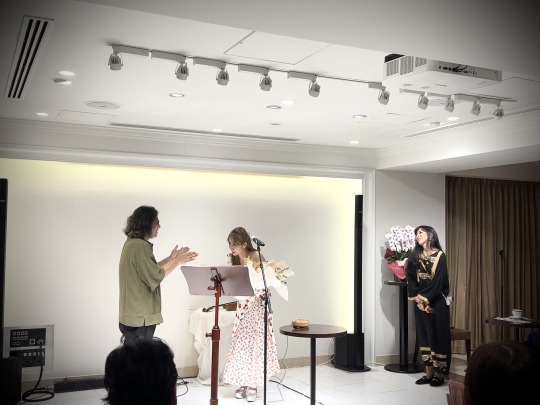
チーム花束、サヘル・ローズ監督
感謝を込めて🌹
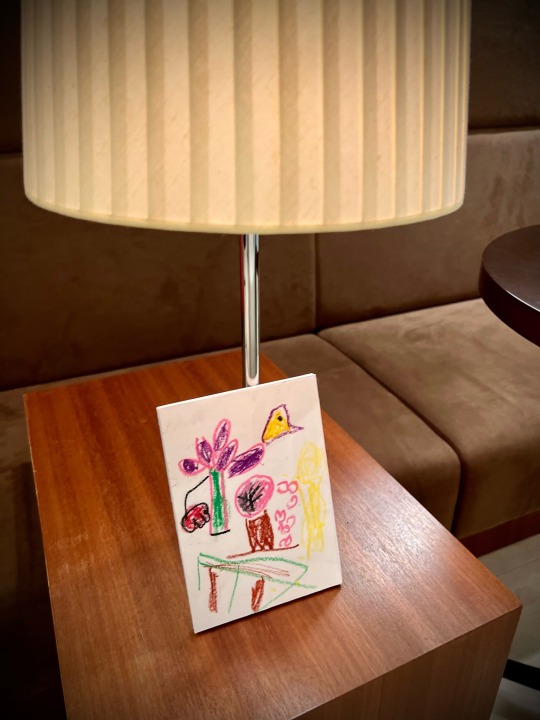
#花束#サヘル・ローズ#Sahel Rose#Sahel Rosa#hanataba#サラ・オレイン#sarah àlainn#sarah alainn#orphanage#花#the rose#you raise me up#kalimba#カリンバ#児童養護施設#岩井俊二#shunji iwai
35 notes
·
View notes
Text
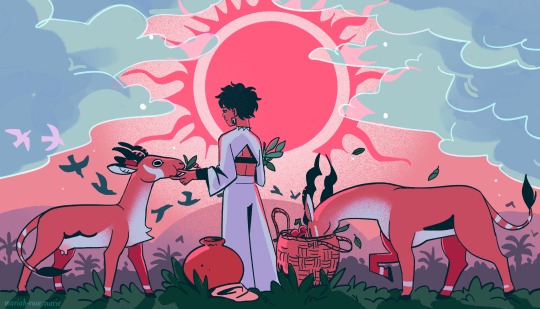
new thing for new business cards: some lush future Africa, de colon1zed & self determined, where the great green wall has grown thick and steady & date palms & mango trees could maybe share canopies, adapting to the new weather patterns & all hope is not lost
(see more things from me via my newsletter, patreon, or bluesky)
#tumblr why must you destroy the quality#art#illustration#climatechange#afrofuturism#africa#greatgreenwall#reforestation#ecology#solarpunk#antelope#goats#farm#farmlife#painting#concept#herding#design#sahel#sahara#desert#restoration#wildlife#sunset#landscape#sun#star#redgiant#mariah-rose marie
197 notes
·
View notes
Text
Extremely belated Civilization VII posting!
I've been really out of it dealing with some terrible stuff these past few weeks so I've been slacking on doing this. I am going to be doing a gigantic masterpost about the leaders Amina, Ibn Battuta, Harriet Tubman, and Benjamin Franklin. As well as Exploration Age civilizations Hawai'i and Songhai, the Modern Age civilizations Mexico and America. After that, the Developer Diary they released about the Narrative Events system and then finally, some of the cooler parts of the recent Modern Age livestream that I happened to really like! So with that out of the way...
Leader: Amina
youtube
https://civilization.2k.com/civ-vii/game-guide/leaders/amina/
The warrior queen Amina rose to power when the trade routes of the Sahara began to provide access to a larger and larger world. A callous and single-minded conqueror, she led the Hausa people on a campaign of expansion across the precolonial Sahel, and she was said to take a lover in every city she vanquished, only to kill him in the morning. In uniting the lands, Amina conquered according to her own fashion – with a sword, not a man, at her side.
Amina is an Economic & Militaristic leader that comes with the Unique Ability Warrior-Queen of Zazzau. Not only do all of her cities receive +1 extra Resource Capacity (Which is a big deal!) but she also receives +1 Gold per Age for each one, which can really add up! And fittingly enough with her militaristic ways, all of her Military untis receive +5 Combat Strength whenever they're on Plains or Desert tiles!
So if you piss her off enough because of her agenda, Desert of the Warrior Queen by having more Settlements on those kinds of tiles...beware her sword! They recommend you pair her with Songhai in the Exploration Age, and I'm inclined to agree though I think she could also pair very well with Mongolia. As for the Antiquity Age, Aksum or Persia seem like good fits in my eyes.
I don't have much more to say about her since I don't know a lot about her, but it's still cool to see a figure like her make a nice showing.
Leader: Ibn Battuta
youtube
https://civilization.2k.com/civ-vii/game-guide/leaders/ibn-battuta/
Ibn Battuta, a scholar and chronicler born of a Moroccan and Berber family, traveled down the trade routes of Africa, Asia, and Europe starting in 1325. After performing the Hajj, the Muslim pilgrimage to Mecca, he went on to explore the Dar al-Islam (the known Muslim world). Through his travelogue, the Rihla, Ibn Battuta's insights into his world, and the lives of those he shared it with, continue to inspire like-minded travelers.
Ibn Battuta was an extremely interesting guy in real life who explored more of the world than anybody else before the modern world; 117,000 kilometers of it compared to Zheng He and Marco Polo who did 50,000 and 24,000 respectively. I feel like he's kind of unsung here in the West despite that so seeing him here now in Civilization VII is really great.
And surprisingly enough, he is also the first leader so far to be considered a 'Wildcard' which is fitting...because holy shit is this guy really good! His Unique Ability The Marvels of Traveling (Which is part of the formal title of The Rihla, his travelogue!) gives him +2 Wildcard Attribute Points after the first Civic in every single Age! They haven't gone too into detail about the Leader Attributes and how to get points into them I don't think, but that is insane. That's 6 of them across the entire game completely for free that you can put into any category when as far as I can tell, the other guaranteed sources of it are from Age transitions. And as if that wasn't enough, all of his units receive +1 Sight which is a big deal because of how much more limited Movement is in this title. And on top of that he has access the Unique Endeavor Trade Maps that lets you gradually see other Leaders' exposed areas.
Fittingly enough, his Agenda Far and Wide makes him like you a lot more if you've uncovered the most Fog of War and dislike you if you have uncovered the least.
I think he is a fantastic addition to the game and much like Benjamin Franklin, Confucius, Harriet Tubman, and Machiavelli, he is a really good choice for a leader who wasn't necessarily a head of state which is something they've wanted to branch out and include for Civilization VII. He is also probably going to be the leader I recommend most to new players or people who haven't been buildcrafting or anything like that too much; A lot of them are still going to be new-player friendly but he is so flexible and can go in literally any direction you want with any civilization you want that he's hard to 'mess up'.
Leader: Benjamin Franklin
youtube
https://civilization.2k.com/civ-vii/game-guide/leaders/benjamin-franklin/
In colonial America, few individuals shone as brightly as Benjamin Franklin. Beginning as a humble printer, he soon established himself as a prominent newspaper publisher. In 1747, he moved into politics and became one of the Founding Fathers, participating in the drafting and signing of the Declaration of Independence. A restless polymath, Franklin also made many contributions to science in fields as diverse as electricity and oceanography.
We've known this guy would be in since forever, so it's nice to finally get the details about him now! He's a Diplomatic & Scientific minded leader who uses his Unique Ability The First American to gain +1 Science per Age on Production Buildings in all Cities as well as an extra +50% Production towards building them in the first place. He also gets a similar Science bonus on every Endeavor he starts and supports and he is allowed to have two Endeavors of the same type active at the same time which is pretty great! In this game Science and Production buildings go hand in hand in regards to being constructed next to Resources so having extra bonuses to that will really help him with the Science Legacy Path, and he does interesting things with the diplomacy side of things too.
His Agenda, Civic Virtue was always really annoying in Civilization VII and I expect it to remains o; He likes other players who share his type of Government and dislikes those who don't. Which has interesting repercussions if that goes further with differing Ideology. However, since he's able to have two of the same kind of Endeavor active, he's able to keep peace and good relationships with a lot more people too; There's a limited number of Endeavors after all, and if you can only have one of each type at a time, it's a very real possibility that you can't build a positive relationship with every player as a result.....
The game recommends playing him with America in the Modern Age, of course. Though he'd also do a very good job as Qing China (Which has not had its details revealed yet, but we do know Han and Ming's already and it will follow suit). In fact, besides the obvious path of the Mississippians or Greece into the Shawnee into America or something just going hard into Han -> Ming -> Qing would work out really well for him.
Leader: Harriet Tubman
youtube
https://civilization.2k.com/civ-vii/game-guide/leaders/harriet-tubman/
Born Araminta "Minty" Ross to enslaved parents on a Maryland plantation, Harriet Tubman escaped slavery, then helped others do the same via the Underground Railroad, a network of safehouses that led to the free North. She led the Union Army in a raid on Combahee Ferry, rescuing over 700 people, and later became involved in the suffrage movement and other causes. Few have embodied the fight for freedom and equal rights as well as Harriet Tubman.
Harriet Tubman is a Diplomatic & Militaristic leader, though she's 'diplomatic' in a very different way than Benjamin Franklin and other Diplomatic leaders have been. Namely because her Unique Ability Combahee Raid gives her 50% extra Influence towards Espionage Actions and 5 War Support for every war declared against her. Espionage in general is now way better and less micromanage-y (thank god) because it is now separate, 'secret' Diplomatic options you engage in against other Civilizations. And all of her units get to ignore the movement penalties from Vegetated tiles, which can be really helpful for fighting near forests and in jungles, if I remember how the new tile system works right!
Because of her Agenda Veracity she likes other players who have declared Formal Wars and dislikes those who have declared Surprise Wars. Which is...interesting? I feel like that is the 'normal' relationship modifier in previous titles; So will that be an extra influence on top, or do other AIs no longer care if a war was Formal or Surprise if they don't have a relationship with one of the other parties?
She of course, is a good pick for America for America and any other diplomatic Civilizations, but she would also be an interesting one for more militaristic ones too, considering her bonuses towards that.
I'm going to elaborate more here since there are a lot of disgusting racists but this was a surprise pick they pulled out just for the Modern Age stream and I have to say I really like it actually. She is an interesting figure in American history and is someone I'd personally consider to be an archetypal 'American Hero' in a way that makes a lot of people upset. (I do not recommend looking at the YouTube comments section) One of my favorite quotes has always been "I had reasoned this out in my mind; there was one of two things I had a right to, liberty or death; if I could not have one, I would have the other.”
I think her bonuses are also a really good fit considering her role as a spymaster and (posthumously recognized as one) brigadier general in the Union army. And they also offer an interesting contrast to Benjamin Franklin's, who is also a 'diplomatic' leader but engages with it in an entirely different way. By making her a more militaristic, clandestine leader it offers that interesting contrast. I know some people were hoping for Frederick Douglass or even John Brown, but I think she best suits that contrast as separate pillars of the American identity; One, the open-armed and high-minded idealist working to build the better tomorrow and the other, the embittered radical who does whatever it takes to realize and make it worthwhile. And in that regard, I can think of no other to better represent the latter in that time period than her, who was one of many to sow the seeds that would bloom into the civil rights activism of the future. And quite frankly, she's going to be on the $20 bill—it does not get much more prominent than "They're literally on the money."
We're finally moving on to the civilizations, and I have four to talk about here! Just as a refresher, EVERY single civilization has the following:
1 Unique Ability (UA)
1 Unique Civilian Unit (UCU) that can be anything from Scouts, to Merchants, to Missionaries to to Commanders, to having Great People which are no longer in the game otherwise!
1 Unique Military Unit (UMU)
1 Associated Wonder (AW) that are essentially an 'alternate unlock' for where they would normally be in the Tech/Civic trees, so you can get access to and build them faster!
3 Unique Social Policies (Traditions) that you can keep and slot in in any Age.
Unique Civics that give unique and persistent bonuses.
A Unique Art Style for ALL of their units and infrastructure. And of course, a soundtrack to go with!
And finally, 1 Unique Infrastructure that consists of either 1 Unique Improvement (UI) OR 2 Unique Buildings (UB) that if built in the same tile, combine to create a Unique Quarter (UQ) with its own special bonus!
I will not be going into too much detail about specific leader/civilization combinations with these new ones, simply because it would be even longer and more detailed than it already is and because we only know of two of the Modern Age civilizations so far.
Exploration Age Civilization: Hawai'i
youtube
https://civilization.2k.com/civ-vii/game-guide/civilizations/hawaii/
With their double-hulled canoes and crab-clawed sails, Polynesian settlers reached across the vastness of the Pacific. Hawai'i, settled around 1000 CE, was at first a series of rival kingdoms until the advent of Kamehameha in 1795. But just a short while later, European and American missionaries, settlers, and planters invaded Hawai'i until the kingdom fell to a coup.
Hawai'i is a Cultural & Expansionist civilization whose inclusion in the base game I feel is a little rough; They seem to occupy a similar space Mongolia does of not really having a satisfying Antiquity Age civilization to have turned into historically, and unlike Mongolia, they don't seem to in terms of gameplay either since there aren't really any civilizations/leaders who specialize so much in the marine/coastal starting biases either. That being said, I do like seeing them and their bonuses are pretty cool and I imagine those previous concerns will eventually be patched up with DLC.
Their UA Moananuiākea lets them gain Culture every time a Settlement of theirs expands into a Marine tile and all of their Fishing Boats gain increased Happiness. This is pretty good for what they want to do, especially since as far as I can tell, every coastal tile can be a Fishing Boat now instead of just Sea Resources like it was in Civilization VI. (Though if I'm wrong about that and the Coastal improvements that can actually be spammed everywhere is something different, that's okay too!)
Their three Civics are as follows:
Mana
Tier 1: Adds Culture for every time an Environmental Event has provided Fertility this Age.
Tier 2: Leiomano Unique Infantry Unit receives Culture when defeating enemy Units. Unlocks 'Kapa' Tradition.
Tradition - Kapa: Increased Production towards Culture Buildings.
Ohana
Tier 1: Unlocks the Lo'i Kalo Unique Building and 'Ahupuaʻa' Tradition.
Tradition - Ahupuaʻa: Food Buildings receive increased Culture.
Tier 2: Increased Culture for Lo'i Kalo Unique Improvements in Settlements with a Pavilion.
Heʻe nalu
Tier 1: Receive a set number of Relics. Increased Settlement Limit. Unlocks 'Ho'okupu' Tradition.
Tradition - Ho'okupu: Increased Culture on Marine tiles.
Tier 2: Marine Rural tiles in Settlements following your Religion provide increased Culture. The Kahuna Unique Missionary Unit Receives an additional charge for the Heal action. Unlocks the Hale o Keawe Wonder.
Their Unique Improvement is a UI called the Lo'i Kalo which provides Food and Production as well as giving adjacent Farms extra Culture, but it can only be placed on Grassland and Tropical tiles.
Their UCU is the Kahuna which is a Missionary that has a Heal action that doesn't delete if when used; I don't know how to interpret if ALL missionaries have that ability and it normally deletes them after, or if this is entirely unique to Hawai'i.
Their UMU is the Leiomano which is an Infantry unit that has extra Combat Strength against both other Infantry and Cavalry Units! That actually seems like it will be pretty strong and help them a lot with their expansion.
Their AW is the Hale o Keawe which provides Culture and makes it so whenver you finish a Building on a Marine tile you receive more Culture equal to a percentage of its cost as well as providing Great Work slots. (Which I don't think they've talked much about besides it being part of the Codex/Relics/Artifacts system.) It can only be built on a Marine tile adjacent to land that is not the Tundra.
With all of this put together, I think a good Antiquity Age civilization for them would be the Aksum, with Hawai'i itself occupying an interesting space in the paradigm the Legacy Paths establish in the Exploration Age; They are incentivized to expand and proselytize in the Distant Lands and receive quite a few bonuses to make that easier and better support the Settlements you establish there so they can grow and prosper which helps them achieve both the Cultural, Domination, AND Economic paths!
Exploration Age Civilization: Songhai
youtube
https://civilization.2k.com/civ-vii/game-guide/civilizations/songhai/
As the Empire of Mali faltered, their Songhai vassals rose up to form one of the largest states in Africa. Songhai revitalized Islam in the region, renewed the academic community in Timbuktu, and controlled the trans-Saharan trade. But the empire’s days were numbered when the Moroccans invaded, armed with gunpowder and seeking new routes for their own prosperity.
Befitting Amina's rulership, Songhai too is a civilization focused on the Economic & Militaristic side of gameplay. They are a fitting successor to the previous Antiquity Age civilization Aksum, though Persia would also make for a fantastic origin point for them.
Their UA Tarikh al-Sudan gives them even more Resource Capacity in Cities on Navigable Rivers and your Trade Ships can never be Plundered on them. This means you can really support your cities and spread out all of the resources you're going to be getting while being able to focus on protecting the ones you trade more proactively because they'll all be save on Navigable Rivers.
Their three Civics are as follows:
Ships of the Desert
Tier 1: Unlocks the Caravanserai Unique Improvement, the 'Timbuktu' Tradition, and the Tomb of Askia Wonder.
Tradition - Timbuktu: Increased Gold on Mines if there is a Gold Building in that City.
Tier 2: Increased Gold on the Caravanserai Unique Improvement in Settlements with a Bazaar. Unlocks 'Mud Brick' Tradition.
Tradition - Mud Brick: Increased Production towards Gold Buildings.
Hi-Koi
Tier 1: Increased Combat Strength to all Military Units on Navigable Rivers.
Tier 2: Rivers do not end Unit movement. Unlocks 'Isa' Tradition.
Tradition - Isa: Increased Movement to all Units on Navigable Rivers.
Kanta
Tier 1: Tajiro Unique Merchant Unit gains increased Gold. Increased Settlement Limit. Cities in Homelands on Navigable Rivers generate Treasure Fleets worth one Victory Point each.
Their Unique Improvement is a UI called the Caravanserai which provides Gold and even more of it when adjacent to Rivers and Resources but can only be built on the Desert or Plains.
Their UCU is the Tajiro which is a merchant that gives you Gold when you create a Trade Route that includes at least one Navigable River!
Their UMU is the Gold Bangles Infantry which is, you guessed it, an Infantry Unit that has extra Combat Strength on tiles with Resources on them and provides extra yields when you Plunder a Trade Route with them.
And finally, their AW is the Tomb of Askia which provides Gold and increases the Resource Capacity in the Settlement in which it was built while providing extra gold and Production for every Resource assigned to it. It can only be built in the Desert!
Put all together, Songhai fits pretty cleanly into the Domination and Economic Legacy Paths, even if it is in more indirect ways than some other civilizations do. Their ability to take advantage of resources is really helpful in the Distant Lands and conquering them is easier; Even moreso if you can exploit Navigable Rivers to do so.
Modern Age Civilization: Mexico
youtube
https://civilization.2k.com/civ-vii/game-guide/civilizations/mexico/
For centuries, Spain extracted from the New World natural resources and the wealth of past empires. But following Napoleon's conquest of Spain, many saw an opportunity to create a new, free society in Mexico. Mexicans succeeded in their struggle for freedom, and a new state emerged – a cultural powerhouse primed to navigate challenges of governance, relationships between indigenous peoples and white Spaniards, and the operation of the Mexican economy relative to its northern neighbor.
Mexico is the first civilization in the Modern age they've announced, which lasts from 1750 into (roughly) the 1950's. And I must say they captured it in a really interesting way that I wish was more well-known. Mexico went through a tumultuous time that doesn't get talked about much from what I've seen here as an American. Maybe that is a personal bias that isn't reflected by others, but I feel like I never heard much about the Mexican Revolution in school despite how important it was to the US; While the 'formal' revolution lasted only 10 years, Mexico was dealing with coups and revolutions for a hundred years prior. I think it's interesting that they're being considered a Cultural & Diplomatic Civilization since I think they're quite a bit more Militaristic than the latter.
Fittingly enough, their UA is Revolución which is a unique Government type they are forced into, which is...also called Revolución! It has a single Celebration effect which gives them a large Culture boost. As they explore their Civics they unlock additional Celebration types they can select, and since they are restricted to the single Government type theirs will be stronger and more flexible since they have more options than the normal Governments do!
Their four unique Civics are as follows:
Planes Políticos
Tier 1: Unlocks the Catedral Unique Building, the Portal de Mercaderes Unique Building, and the 'Corridos' Tradition.
Tradition - Corridos: Increased Happiness in Settlements for every Tradition slotted into the Government.
Tier 2: Increased Policy slot for Revolución Unique Ability. Unlocks the Palacio de Bellas Artes Wonder.
Plan of Iguala
Tier 1: Unlock an additional Celebration effect, granting a large amount of Production towards Military Units for a set number of turns. Unlocks the 'Cry of Dolores' Tradition.
Tradition - Cry of Dolores: Increased Combat Strength for Units in Friendly territory for every Tradition slotted into the Government.
Plan of Ayutla
Tier 1: Unlock an additional Celebration effect, granting a large amount of Influence towards initiating Diplomatic Actions for a set number of turns. Unlocks the 'La Reforma' Tradition.
Tradition - La Reforma: Increased Culture in Towns for every Tradition slotted into the Government.
Plan of Tuxtepec
Tier 1: Unlock an additional Celebration effect, granting a large amount of Science for a set number of turns. Unlocks the 'Order and Progress' Tradition.
Tradition - Order and Progress: Increased Science in Cities for every Tradition slotted into the Government.
Their Unique Improvement is two UBs and a UQ. The Catedral is a UB that provides Culture and receives Happiness when adjacent to other Culture Buildings, such as the Portal de Mercaderes their other UB, which provides culture as well as receiving Gold from adjacent Gold Buildings. When both of these occupy the same tile they create a Zócalo UQ which gives extra Culture for every Unique Tradition slotted into their Government! (So all of their Traditions from their civilization+previous ones, as well as any they might have picked up from Independent Peoples.)
Their UCU is the Revolucionario which is essentially a 'Great Person' from previous Civilization titles. They can only be built in a City with a Zócalo Quarter and each one is random and can only be received ones. Each one also increases the cost to make the next. They are:
Amelio Robles Ávila: Activated on a Zócalo Unique Quarter to grant a set number of free Soldaderas Unique Infantry Units with increased Combat Strength.
Vicente Guerrero: Activated on the Palace to immediately trigger a Celebration.
Petra Herrera: Activated on a Commander Unit. All Soldaderas Unique Infantry Units within its Command Radius gain increased Combat Strength.
Miguel Hidalgo: Activated in a Town's District to summon a free Infantry Unit on every land District in that Town.
Ángela Jiménez: Activated on a Commander Unit to grant Culture for every Promotion it has (effect scales based on game speed).
Benito Juárez: Activated on a Zócalo Unique Quarter to grant an additional Tradition slot.
José María Morelos: Activated on a Commander Unit to heal all Units in its Command Radius to full health.
Antonio López de Santa Anna: Activated on a Commander Unit to grant it enough experience for a set number of Promotions.
Pancho Villa: Activated on a Commander Unit. When a Unit within this Commander’s Command Radius defeats an enemy Unit, gain Gold equal to a percentage of its Combat Strength.
Emiliano Zapata: Activated on a City Center to grant increased Culture to all Farms in the Settlement.
Their UMU is the Soldaderas, an Infantry Unit that can heal Adjacent Units by a certain amount that doesn't stack, so they are a battlefield medic of sorts!
Rounding it off is their AW, the Palacio de Bellas Artes. It provides Culture and Happiness as well as extra Happiness from Great Works while coming with some slots for them itself. It can only be built adjacent to an Urban District!
All together, Mexico seems to be an incredibly interesting civilization. Again, the 'Diplomatic' tag seems to be really fuzzy and vague but they seem to be fantastic for any kind of gameplay you desire. I honestly couldn't recommend any single one since it seems to be versatile enough to fit into any of them. I think their any of their historical paths are also very flexible; Your choice of either Greece or Rome into Spain as a history means you have a lot of different flexibility on what Legacy Paths you've been traveling down and the same is equally true if you instead went from the Maya to the Inca (Who I assume are the other path to Mexico—every civilization seems to unlock two possible in the next Age by default so far and this seems to be the reason why the current multiplayer cap is so low in the Antiquity and Exploration Ages while it is expanded again in the Modern.) So while they don't necessarily have any strong bonuses to any of the four in particular, their flexibility and ability to continue off from where you came from is top notch! If you like messing around with the 'Great People' though I'd recommend that Greece into Spain path however, since both have their own.
I do assume playing as either Spain or the Inca will be the only way to turn into them besides whatever alternate unlock they might have though(The developers have not shown off any of them except what Mongolia's might be.) because three of the people that would have been really good picks for leaders (The alternate way to unlock a later-Age civilization as a choice is if you are playing as the Leader of one) are instead Revolucionarios instead, which I feel like is a hard de-confirm for one showing up as a leader. Maybe I'll be pleasantly surprised? It remains to be seen. Also the team at Firaxis was incredibly based for including Amelio!
Modern Age Civilization: America
youtube
https://civilization.2k.com/civ-vii/game-guide/civilizations/america/
America was a new nation, one founded on Enlightenment ideals of progress and rationality, industry and progress, and ever-expanding horizons. The American Revolution ignited from this demand for expansion: to expand trade independently to the Caribbean, to extend the colonies’ borders westward (into land held by indigenous nations), and freedom from British tariffs and taxes.
America is the second revealed Modern Age civilization, and perhaps the one people most expected considering where the game is being made. I think more than perhaps any other civilization, they are receiving the biggest benefit from the new Age structure and making sure each one is interesting to play and has their own civilizations entirely; They've always been kind of whelming since IV. They weren't exceptionally weak then by any means, but they just didn't offer anything unique. In Civilization V this didn't change much. Their main bonuses of 50% cheaper tile purchases and +1 Sight weren't bad by any means, but they were nothing special either. And their UBs and UUs always came online way too late. And quite frankly, it was extremely middling in Civilization VI at launch too; It took DLC to make America itself better and Theodore Roosevelt was only ever just Alright until he got his Personas and it too suffering from UBs and UUs that only ever became usable in the late game. So much of the 'modern' civilization gameplay has consisted of twiddling your thumbs while you wait for their actually unique thing to finally come online and being kind of generic while it wasn't. Earlier civilizations also had that problem in reverse, but it felt better because snowballing in the early game was better. By focusing on making each Age a distinct thing with their own civilizations, this problem is entirely averted and now America (And other civilizations of course!) can truly shine. So with that mini-rant out of the way...
America is an Economic & Expansionist civilization who seems to pull most thematically from the 1800's with Manifest Destiny and all that entails in mind. Their UA is Frontier Expansion which gives them Gold every time they Improve a Resource.
Their three unique Civics are as follows:
Yankee Ingenuity
Tier 1: Unlocks the Steel Mill Unique Building and the 'Gold Rush' Tradition.
Tradition - Gold Rush: Increased Gold for every assigned Resource.
Tier 2: Prospector Unique Merchant Units receive a Gold discount.
Captains of Industry
Tier 1: Unlocks the Railyard Unique Building and the 'Robber Baron' Tradition.
Tradition - Robber Baron: Increased Influence for every assigned Resource.
Tier 2: Increased Production on Resources. Increased Settlement Limit.
Wartime Manufacturing
Tier 1: Units receive increased Combat Strength for having more than one adjacent enemy Unit. Unlocks the Statue of Liberty Wonder.
Tier 2: Increased Production towards Military Units when fighting a war in which your Support is higher than your opponent. Unlocks the 'Lend-Lease' Tradition.
Tradition - Lend-Lease: Increased Gold and Influence per Trade Route.
Their Unique Improvement is two UBs and a UQ again, this time being the Steel Mill and Railyard respectively that combine together to create the Industrial Park UQ. They both synergize really well; The former is a Production Building that gains extra Gold for adjacent Resources and the latter is a Gold Building that gives extra Production for adjacent Quarters. When combined together the Industrial Park increases the amount of Food in a City for every Resource assigned to it, which America is already heavily incentivized to get!
America's UCU is the Prospector, which is is a unique Merchant that can be activated on unowned Land Resources within a certain range of all of your Settlements...where it will automatically claim a path of tiles to and Improve that Resource! This is very very strong and as you can see, really does a lot to feed into the rest of their gameplay.
Their UMU is the Marine, which is a unique Infantry unit that requires less Production to build and has the Amphibous keyword, making it so they have no Combat penalties when attacking from Embarkation. It still costs them Movement to Embark and Disembark though, which is kind of funny so they're always chilling in their DUKW's anyway. They just pull their awnings up when they're Embarked!
And finally, the AW for them is of course the Statue of Liberty, which provides Happiness and a certain number of 'Migrant Units', which are Civilian Units that can be used to trigger Growth Events in any of your Settlements. It also increases the Resource Capacity in a Settlement, as well as provide Gold and Production for each one assigned to that city. It can only be built on the Coast adjacent to land!
All together, America is really really really well suited for completing the Economic Legacy Path which is very fitting, considering its emphasis on being a Robber baron. Just like the previous Ages, there is a big emphasis made on collecting Resources, though I'll go into the specific details about that later on. I think the way they expand and why are also interesting; They don't have a lot of direct military bonuses, but are still capable of holding their own in that regard while they secure resources. It straddles that period of time in America history where barring the Civil War it was only ever really a means to an end to acquire more resources and they were otherwise uninvolved and isolated from the rest of the world and their much more vigorous turmoil (That America itself contributed to of course, in regards to the Indigenous peoples of the continent.) and the slow lead-up where that would very much change with WW2. Focusing so much on the Robber barons makes sense in that context.
As for the historical paths to America? It's one of the squickier aspects of the new system, but the Mississippian civilization into the Shawnee provide a really strong ground when it comes to gathering and taking advantage of Resources. It is what I would personally recommend in all likelihood.
Developer Diary #4: Emergent Narrative
This is the section I'm going to talk the least about, mostly because it speaks for itself. I think everything discussed here, like the previous developer diaries, is incredibly interesting and very much what I like to see though. It is a continuing trend of introspection and thoughtfulness that I really appreciate, and seeing how some of the examples in the post itself have come to fruition in the streams themselves is a nice thing to see. I especially like seeing the wide variety and extensiveness of this new system; It is one of the things that reminds me of Civilization: Beyond Earth which I really liked and seeing it further refined and less 'jank' for lack of a better word is great.
The Modern Age Stream
youtube
This section from me is going to be a highlight summary for the most part and some of my own thoughts; The full stream is around an hour and thirty minutes long for those who want to see the whole thing though!
To start off with, the Leader count was fully confirmed for the first time; There will be 26 leaders (5 of which are Personas—essentially, a different flavor for a leader) complimenting 31 civilizations at launch. With Benjamin Franklin and Harriet Tubman officially revealed today that is 14, which means there are 7 left! Which is coincidentally, how many weeks away we are from launch. So you can expect seven more posts about the leaders from me and eight about the rest of the Modern Age civilizations (Or maybe I'll combine each one together into the same post?) For other leaders and civilizations that have been soft-confirmed even if there bonuses aren't revealed yet I believe we have:
Himiko for Japan (And Japan in the Modern Age as a result—I really hope they get representation in the Antiquity and Exploration Ages later too.)
Bugunda
France
Mughal India
Qing China
Siam
Napoleon Bonaparte (And his Persona!)
I have no clue in what order they will be released in and who else is on the list but I eagerly await to see who gets in!

Dark Age policies are back! I don't know if they were showed off earlier, but I think it's nice to see them included. IIRC you fall into a Dark Age for a given Legacy Path if you failed to meet even the basic Milestone for it in the previous Age? It feels less like an intentional tactical failure you can game like in Civilization VI and more like a pity feature though, since you really want to get those Legacy Points to spend on actually good things. Especially since choosing one consumes ALL of your other points in every category. It seems like something you should only do if you are falling behind on a certain path I'm honestly not quite sure how or why you would this honestly; Maybe you know of another player who is insanely well-positioned to get a certain Legacy Path victory and you want to try and take it out from under them in the next Age? It feels like something you can't know until it's too late to intentionally throw like that though, and that you'd do better just fighting for it normally in that Age and into the next. Maybe it's for those who didn't do particularly well in achieving any of the Legacy Paths?

The Modern age officially starts at the year 1750 with things such as the invention of the steam engine!

And...it ends in roughly 1960, with the discovery of Rocketry.
This is going to be controversial. I already see a lot of complaints about it and how the game (for now—they also teased how an expansion might go beyond it later.) is 'incomplete' because of a lack of a Contemporary/Information Age but personally...
I really don't mind? It feels kind of superficial and knee-jerk, even.
Civilization IV, V, AND VI have all desperately suffered from that part of the game being boring and flawed and half-baked every single time on launch. Even more than the previously mentioned problems with the more modern civilizations, the systems themselves just feel undercooked and less engaging and had to be fixed with DLC much later, with Beyond the Sword and Brave New World and Gathering Storm respectively. It has always been the weakest part of the experience so far whether it be because the AI doesn't engage with it properly or because there just isn't enough to do that feels 'right'.
Given the absolutely massive emphasis they have placed on the Ages system making each individual civilization and phase of the game always feel good to play and be involved in I really don't mind if they chopped some years off to make it so the experience that remains is even better. So many games suffer nowadays from being as wide as an ocean and as deep as a puddle. Even games that are still complex or really engaging still suffer from feature creep and stuff that just feels like underbaked padding. It obviously isn't a one-to-one example but I feel like if you cut off like 30% of the map in Elden Ring (Not including Shadow of the Erdtree because I haven't beaten that yet and can't speak for it.) the game would be way better and a stronger experience, compared to how redundant some of those Dungeons and such really get and feel and the actual size of the world map not really taking advantage of said size. By far the strongest and best parts of that game are the Legacy Dungeons that best resemble their previous titles; They are the tighter, stronger experiences that have less padding and provide an interesting, satisfying experience the whole way through them.
So no, I'm not particularly bothered if the three Ages currently in the game are really good and fun to play in if that nebulous fourth Age that has historically always been really lackluster was the expense. Especially since they're focusing so hard on addressing the reasons why it was and purposefully left the door open to expand upon and include it later in an equally as thoughtful and considerate manner. The game has been in development for some time now; I prefer the prioritization being shown here especially since they can see what players end up actually liking about every Age and its systems and what they would like to see in the future before including it with those things in mind in whatever form that ends up taking.

Here are the three types of governments typically available to civilizations in the Modern Age. Remember that whenever you have enough excess Happiness to trigger a Celebration, you choose one of the two bonuses listed there and also expand the amount of Social Policies you can include in your Government.

Natural History is one of the very first Civics you can research in this new Age and it is the most important one for achieving the Cultural victory! I think it's interesting to make it available so early on given the prioritization towards it being based on acquiring 'Great Works' so to speak. With the new Narrative system though I'm quite happy that it will be less annoying to fill those up, even if it means there aren't necessarily as many on the map? That is the implication I'm taking away from it at least since they mentioned sending the Explorer to Universities and Museums to do research on where some could be found; Gone is the "X Civilization or Barbarian Artifact" theming shenanigans on an intrusive tile peppered everywhere it seems. I also like the flavor of them having to scour the archives and do research before finding some; I can see it tying into the Narrative Events in a fun way to include hoax artifacts for example or many of the stories that are told about Ancient Egyptian curses or haunted burial grounds and the like.

This is a random event that can result in giving you an Artifact for example. If you choose the top option 'the story continues' and it can result in you gaining one, regardless of your Explorers. This event was triggered by placing a new building, the Grocer, on a Floodplains! It is referencing this event pretty explicitly by the way, as a historical fun fact.


Much like how the Culture Legacy is an evolution of the previous Age's, a new type of Resource and its acquisition is available in the Modern Age and they become relevant with the advent of the Industrial Revolution. Certain Resources are considered 'Factory Resources' and when assigned to a City with a Factory, they provide an Empire-wide bonus. And you also want want to pump as many of those into Factories as you possibly can for the Economic Legacy. I am not going to talk about the specific steps and end goals of each Legacy until later on though, simply so you don't have to skip around too much about what I'm talking about.

They confirmed that Independent Powers are created at the start of every Age; This 'wide open land' was previously unoccupied but now it is populated as you can see here. And of course, since they're playing as America for this stream Manifest Destiny soon happens...

Espionage is a thing again, and it's not as annoying or a pain in the ass as it was in Civilization VI! Instead of having to micromanage a ton of spies it is instead a 'secret' Diplomatic action you are able to do to other civilizations and what they can do against you in turn. That particular one I've highlighted seems like a really good option to pick against anyone you're about to go to war with in a few turns or are even in one currently, lol. If your spies get caught you suffer are a relationship penalty and the opposing civilization gets free Influence however!
Also just above is 'Sanctions' which is another Diplomatic Action type, and I don't imagine that requires a lot of elaboration. In general I really like how the new diplomacy system works now.

Civilization V enjoyers, wake the fuck up IDEOLOGIES ARE BACK!
In this game they are unique Civics that when chosen, you are locked into. These are Democracy's unique Civics that I've taken screenshots of since I really don't want to figure out how I would format it nicely:



So Democracy seems to be focused around a few different things and for the first two Civics at least, they come with downsides to compliment their bonuses. Democracy hurts your Towns a little bit to help your Specialists while Liberalism seems to do the opposite and is reliant on your particular strengths and developments as a Leader. And it's capped off by Progressivism which does neither, instead providing nothing but bonuses that are not directly related to your Settlements at all. I wonder how true that is going to be for Fascism and Communism in regards to their structures?
By the way, if you paid attention to the previously mentioned Governments, you'll notice that they are a separate thing from these ideologies. It's a very 'American' way of looking at it but something they mentioned is how Democracy can be separate from government types though it applies somewhat to the other two Ideologies too. A Bureaucratic Monarchy that follows a Democratic Ideology certainly resembles some civilizations in that early modern era. I'd say that's how the British Empire worked in that time period (And arguably does still now).
Needless to say, civilizations that follow different Ideologies hate each other, which is something directly relevant for the Military Legacy Path, which I will again be talking about a little later all together!

It's a 'smaller' thing but I really appreciate how because of the Age system and the architecture being preserved throughout said ages that you can tell what the exact path this America took was and the lasting mark they've left on their civilization; Even if you couldn't see the city names you'd still be able to tell they came from the Greeks and the Normans from the architectural style alone. In general the way replacing buildings and such works means you get to see really distinct settlements throughout the whole game instead of the previously static ones where you have the same Monument and the same Granary for the entire game. Also there is 50 pops living in Athens and 51 in Rouen, I know the yield porn has been crazy in this game but damn is that a lot! (Also, the player who made this save moved their Capital from Athens to Rouen during the transition to the Exploration Age. He then did the same for Washington D.C for the transition into the Modern Age!)

Speaking of yield porn, I am INCREDIBLY thankful for the fact that new Buildings to place down automatically calculate for what the highest possible one would be with the current Specialists assigned to tiles. Civilization VI sort of had that with the District placements but it's very nice to see this refined further.

In this case, it involves 'Overbuilding' which is essentially replacing a building that became obsolete from the prior age. Unless you selected it as a Golden Age bonus, these always lose their Adjacency (And thus Specialist) bonuses when the next Age rolls around so replacing obsolete buildings is encouraged. There are still reasons to select those traits of course—having three different Science Buildings that still get all of their bonuses is really good for example—but this is still a really nice feature that lets you shore up stuff that traditionally got left behind in previous titles.
Also, those tiles across the river that can be built over and turned into new Urban Districts? Those are Kasbahs. Notably, they are not something you can get from either the Greece or Norman civilizations...they are instead one of the possible bonuses you can select from becoming an Independent People's Suzerain! I think I've mentioned previously that by doing so you can get something unique and powerful from them and in this case, the player chose to get the Kasbah Unique Improvement!


Also again, making that kind of choice at all triggered another Narrative Event. This one can just give you the Artifact directly and it specifically references and makes a callback to the things you have been doing there until now, which I really like!

RAILROADS YAY YAY YAY YAY YAY!!!!!!
Rail Stations are a Building that occupies an entire Tile by itself; Placing only one down is only half of the equation. The fun comes when you place another one down in a different Settlement; If there exists a path between the two (or more!) that exists already, it will be instantly upgraded into a railroad connecting those two points. This is fantastic, because it is even less annoying micromanagement now! certain resources provide an even greater bonus to Settlements connected by Rail—an example shown was Furs providing +6 Happiness to a Settlement that had a Rail Station and only +3 to one that didn't. Settlements that are connected by a Rail Station also provide a +10% Production bonus to training units on top of its own base yields.
Also, and the really big thing IMO is that ALL units adjacent to or on a Rail Station can instantly move themselves to any other tile adjacent to or on a Rail Station within 20 tiles! They didn't explicitly say so, but it consumes all of that unit's Movement to do so because they mentioned how it can't just take you to the opposite end of the world immediately, but you could chain them across it that way over the span of a few turns instead of the few dozen it would otherwise take and then later moved an Army Commander that way who had no Movement Points left afterwards.
Also, these alongside Factories are mandatory for the Economic Legacy Path.



There is a third type of Commander now, with three different variations and contextual trees as a result! These are for air units. I won't go into too much detail about things like the Group Orders and what the different promotions mean and the like because of an upcoming Developer Diary that is going over it for me, but what you should know is that Squadron Commanders are effectively air bases you can use either as a staging ground for fighters/bombers or to paradrop Land Military Units elsewhere. They can only be stationed on certain types of Land tiles even if they can still be moved elsewhere and they are otherwise stationary.
Aircraft Carriers are focused more on the planes themselves and increase their capacity to carry them as well as their actual effectiveness in battle, and Aerodrome Commanders are a lesser version that lacks the bonuses of either but can be built in a static location which is more than fine.
You no longer deploy Air Units on specific Missions; Fighters will just patrol wherever they are and you can use Group Orders to direct all of your bombers to attack a single target for example.
Though, speaking of bombers...

Dive Bombers are a thing for the first time ever! While Heavy Bombers seem to be specialized for taking down Fortifications (I'll talk about Light vs. Heavy which only becomes relevant in the Modern Age when the new Developer Diary comes out) these are focused primarily on taking out other Military units instead.

Also god damn is even just the Fighter's range absolutely ginormous! I'm really glad the AI is finally engaging in Naval and Aerial combat; It's been about damn time and I can't wait to see how it does.
Finally, with that all out of the way, it's time for me to talk about the Legacy Paths and how they culminate into a Victory in this era. An important thing to mention is that much like Science Victory has in the past, this time every single Victory comes with its own 'big moment' and a capstone project to complete before it's completed. Gone is winning a Diplomatic or Cultural victory entirely by accident; Not only do you have to accumulate the right amount of points but you have to be the first to complete the special project associated with each path. I also like how even if each path remains the same at their cores they evolve in interesting ways that remain faithful to how you were engaging with every Age so you're never left with a feeling of "Now I have to do something completely different for no reason?"

Since I talked about it so much already, I'll start off with the Economic Legacy Path. Besides being a cheeky reference to Railroad Tycoon, a game Sid Meier once made, it is centered very firmly on the Resource acquisition of the previous Ages taken to new heights. The playstyle here is really focused on going wide and getting as many Factories with Rail Station (Or Ports, but they didn't talk about those at all on the stream) connections in your empire as possible; Because each Factory with an assigned Factory Resource that is connected like that contributes a point every turn towards this victory type. You need to get 500 total to unlock the final project of establishing the World Bank. If you managed to establish 10 connections like that you would be done with it within 50 turns. So it's a little slow-going but that's fine; All of these seem to be save for perhaps the Military Legacy which still seems to require a good bit of research.

Remember what I mentioned about Ideology before? In the Exploration Age you received points towards this Legacy for having & conquering Settlements in Distant Lands that have your religion. This time, you want to be conquering the Settlements of your ideological rivals since doing so gives you the most points possible of 3 for each individual one. Notably, this also counts if you are reclaiming your own conquered Settlements from them and you need 20 total.
It all culminates in Operation Ivy, also known as the very first thermonuclear bomb. This hydrogen bomb marks the end of the Military path and provides you some limited access to more 'conventional' nuclear bombs prior to that to aid you in your warmongering.

It's the Science path, you know it well from previous titles. In this case the scale of it is smaller though, being confined to completing projects (Which require highly developed infrastructure to make any headway on, which is what you wanted for all previous Ages on the Science path anyway. Namely, because after the first series of projects it culminates in completing the First Staffed Space Flight which was historically accomplished by the Soviet Union in 1961.

Finally, there is the Culture path. Much like in the previous Ages, you are doing your best to accumulate as many fanciful collections of different glamorous, awe-inspiring things as possible. In this case, it is archeological artifacts that enshrine your civilization's history forever. It's special project is creating the World's Fair to show it all off which is...interesting?
Admittedly this is part of why I have hope that there will be further expansions to a Contemporary/Information Age. Because not only is 'Age Progression' still a thing for these (Even if it functions kind of like the 'Score Victory' previously did for games that last only a single Age or in this Modern Age when nobody completes these projects.) but because these are all fitting 'capstones' to build off from in my opinion, even if they are scattered a little all over the place. The World Bank was established IRL in 1944, Ivy Mike was tested in 1952, Yuri Gagarin was in space in 1961...and the World's Fair as we recognize it was technically first celebrated in 1851. Though I think this one in particular is meant to be more evocative of the 1939 New York World's Fair with its focus on cultural themes and societal progress rather than strictly technology. Honestly I've always wanted to go to one of those one day; Maybe by some miracle I will be able to attend the 2025 one in Japan, though almost certainly not. Maybe one day...
And now, finally...I'm done. Until the new Developer Diary comes out today. I'm done. I hope if anybody actually reads this that it gave them some ideas or insights into this game I'm really looking forward to releasing. Have a great rest of your day/night!
9 notes
·
View notes
Text
Swallowing Sand in the Sahel

Havent posted here in a while so my art style has changed alot haha anyways have some oc worldbuilding ive been cooking up! "Sahel!, Sahel, Sahel... Sahel! Saheliland!" "The White Rose spins around the arid dune."
#digital art#drawing#art#artists on tumblr#artwork#my art#oc artist#worldbuilding#sahel#War#alternative history
4 notes
·
View notes
Text
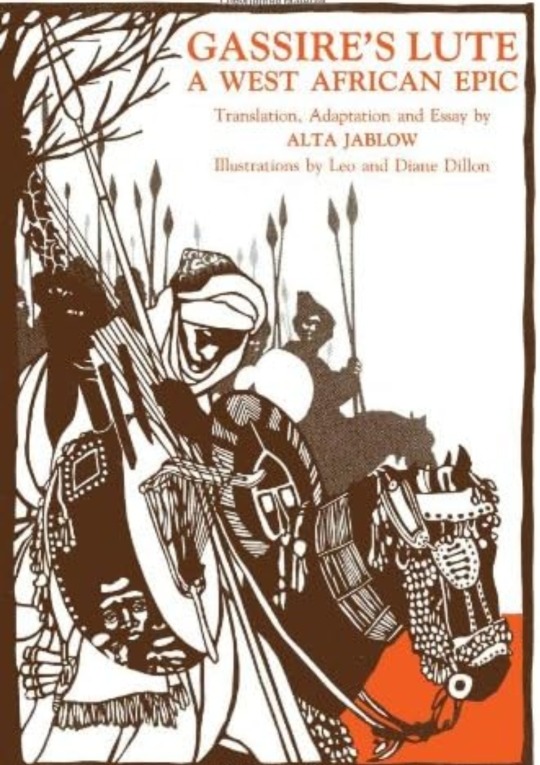
This orature legend of the birth of the Soninke bardic art chronicles the fall of Wagadou, the Soninke/Mande empire more popularly known as Ghana (not present day Ghana the country, which is named after this historical Mauritanian-Senegalese-Malian region empire).
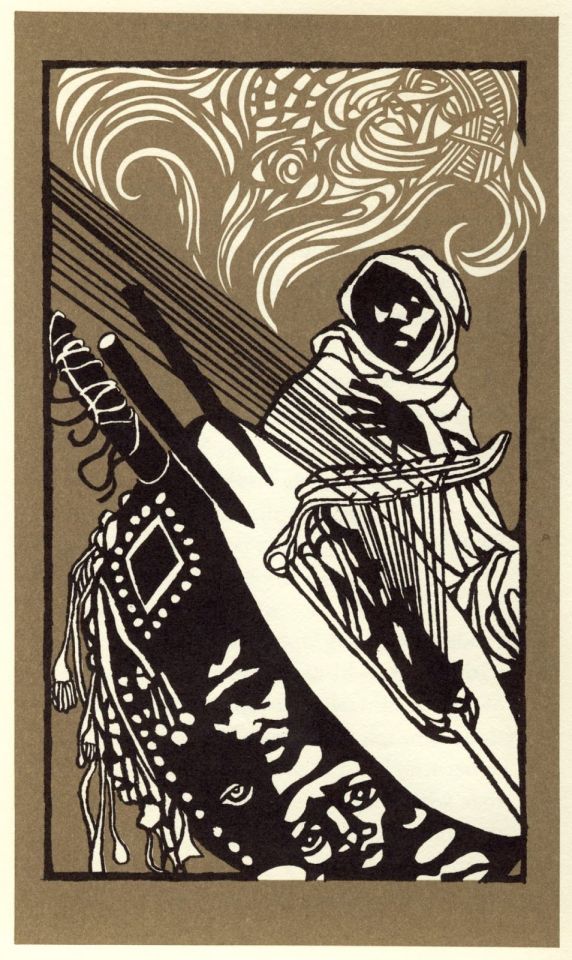
Follow Gassire the warrior prince, who turns away from nobility to become his people's first diari (griot: bard).
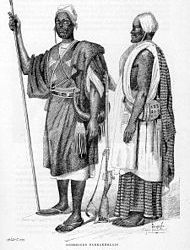
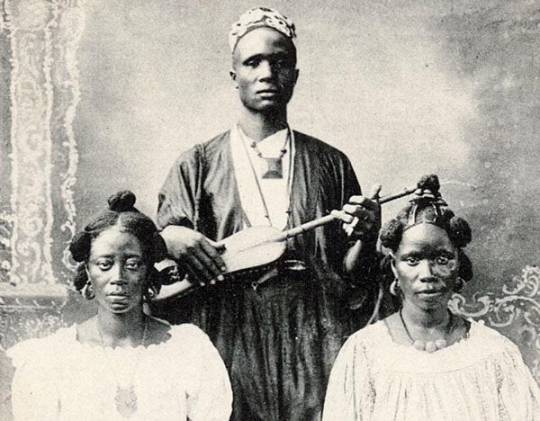
Here is a song named for the Soninke
https://open.spotify.com/track/55YdtD6BbmJ7NsDW4Z1Dpo?si=2Ogi-U2QQkuHoSZef_-PXw
Wagadou rose between the 1st-3rd century and fell in the 13th century, after being conquered by Sosso and submitting to the later Malian empire. Wagadou was preceded by Dhar Tichitt (1600 BC) and Djenne-Djenno, the ruins of which can be seen today. It was followed by Mali and Songhay, 2 of the most powerful kingdoms in the old Sahel.
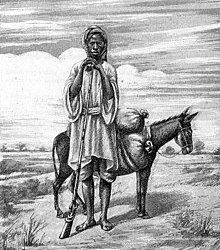
Ghana means "warrior chief," and Wagadou (the Soninke name) could be named for the Wague (name for the nobility of the region) or named after the Soninke goddess. Legend says that when the 2 sons of the Kaya Maghan (king of gold, 800 Dinga Cisse, princes Khine and Dyabe fought over who should take the throne. Khine was victorious, continuing the Cisse Tounkara dynasty. However, Dyabe in humiliation, made a deal with the seven headed snake Bida, who promised victory over his brother in exchange for sacrificing a beautiful virgin every year. It was believed that the prosperity and gold that granted that prosperity was a result of these sacrifices, and so they continued until the brave fiance Maadi of the beauty Sia Yatabere was the first to rebel, slaying the snake and cutting its heads. Bida cursed Wagadu to drought and ruin, and sure enough, Wagadou fell, and the Soninke had to migrate southwards to find fertile land.
The now rare film Sia, Le Réve du Python, is based on this legend.
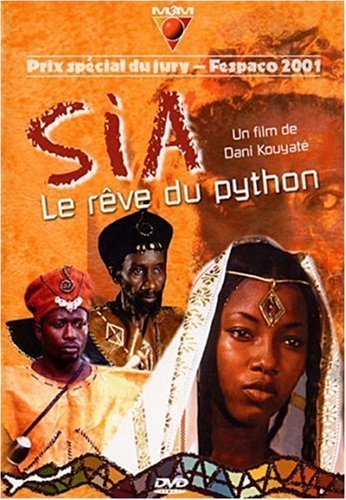

The capital of Ghana/Wagadou is believed to be Koumbi-Saleh. Here is an ambient instrumental piece paying homage to this ancient city:
https://open.spotify.com/track/4SRL7gOHRxrSb4TyvrBnvq?si=sNF5NePgQYqGOIsCbsdSCg
Vintage video of Soninke girls singing and flute player
https://youtu.be/bQm2aIVHakw?si=Rf3oYrcOsGnEAXTS
Soninke traditional drum dance
https://youtu.be/8FmiE_kdda0?si=7PQPVdYE0gNAJ4et
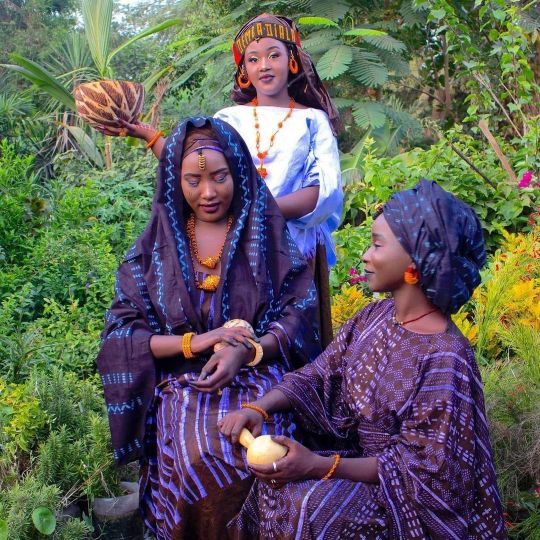
#sahel#sahelian history#soninke#wagadou#ouagadou#ghana empire#kaya maghan#sahelcore#bida#seven headed snake#wagadu#legend of wagadu#sia yatabere#sia dream of the python#dinga cisse#sahelian music#sahel aesthetic#gassire's lute#alta jablow#griots
9 notes
·
View notes
Text
Intro : Pink Panther

Dans les ruelles étouffantes d'Errasfidia, où les regards pèsent et les lois murmurent des interdictions tacites, une silhouette solitaire marche. Il porte une cagoule noire qui ne cache rien de ses cils démesurés, peints d’un rose vif. Il marche, comme un poème en mouvement, comme une énigme, comme un défi silencieux. Dans son coeur, le poids invisible d'une identité que certains veulent effacer. Il n’est pas là pour se battre. Juste pour exister, et pour rappeler que c’est déjà une révolution. Ils l’ont appelé Pink Panther, moqueurs ou fascinés, et il a gardé ce nom comme un trophée. Mais il sait que cette ville n’a jamais été sienne. Ils disent qu’il est du Sahel, ou d’ailleurs. Peu importe. Ici ou là-bas, il n’a jamais eu le droit de marcher en paix. Un jour, ils l’ont renvoyé. Peut-être au Sahel. Peut-être ailleurs. Là encore, peu importe. Ils ont effacé sa présence, mais pas son ombre. Car dans chaque rue où il a marché, dans chaque esprit qu’il a troublé, il a laissé une trace indélébile : Le droit de se tenir debout parmi nous.
0 notes
Text
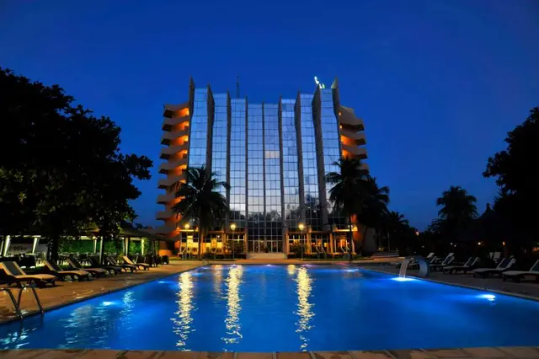
🦋Silimandé, jlaisse cette photo, elle m'intrigue dans mes sommeil, dernier rempart d'un puzzle de ma jeunesse...
A ma forêt d'hibiscus
Àu baobab sacré
Non loin du marée des curieux
Le lion garde la clé
Tel ma tour jumelle à Agadez
Merci biandagara
J'espère que c quelques mots
Vont me réveiller un souvenir
Autre que les jardins de ma demeure....
Hôtel tulipes
Clé nom de mon enfance
Cheval ailé
Rose de mes sommeils
Falaise qui porte ma vie
.
Juge incertain
De l'armée qui me décime
Sous un fléau que je ne connais
Moi caché dans une réserve
Qui abrite mes derniers éléphants
Du couché de soleil
Aux Cayman qui garde le lac et les fleuve
.
Et où est mon banc de sable aux Sahel.....
....sous mon sommeil
.1986-1989
.
Moi qui critique tout les hôtels de ce monde
Comme métaphore d'une conscience et d'une économie sans roulement
Je reste bloqué par celui ci
L'odeur du fleuve sur c abord
quand je passe en moto
2015.....trop d'intrigues sensation de mon enfance
.
Es ce que mon âme n'a pas mangé ce souvenir
Il y avait des plaques de marbre
Que je confonds s'en doute avec l'hôtel indépendance
.
La nuit de quelque chose de féroce et de paisible
Comme une distorsion
Imagé d'un passage paisible
Seul face un oublie
....je me souviens de toute ma jeunesse
Mais pas de ce truc...
Du rond point des nations unies
Métaphore du monde
Tulipes
Métaphore
De celui qui garde le lac
Ici une piscine
Mes amis
Lesquels
Les enfants des tulipes
Ma vie c'est écrit par un dessin animé que j'ai imaginé
Au sujet de l'Afrique
La vie est blessé
C la finalité
Le sens est comme une fougère qui perd sa douceur et ses couleurs humide
Contraste
...
J'doit être un dessin animé de mon imaginaire
C ce que cet hôtel m'impose
Pourtant j'existe à travers la métaphore
.............un monde qui voile la sensation de reprendre les souvenirs de ses jeunesse
.
Je me souviens du sommeil de ma naissance
Shelo* .toi de tes larmes....
Je comprends que la tulipe c ton monde shelo
Tu abrite les enfants
Contre un voile sur la sensation
Après que d'autres souille lame des innocents par leur passage
🦋👊👊👊👊👊👊👊👊👊👊
Ce faire volé son âme
Y être souillé
Merci shelo*
Strophe en pépa
0 notes
Text
World Refugee Day] "Another World Story to Tell You Now" with Sahel Rose | News & Media
The number of people displaced by the ongoing humanitarian crises in Ukraine, Gaza, and other regions around the world continues to increase, They discussed the impact on children and women, challenges, and how support should be provided. The video and article are available here. (The article is based on the dialogue, with additions and rearrangements.) More than 100 million refugees and…
0 notes
Text
Secrets of Adenium Obesum: The Desert Rose Story
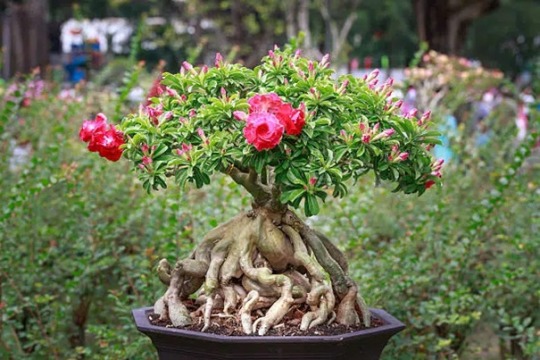
Title: Adenium Obesum: Unveiling the Enchanting Tale of the Desert Rose
In the arid landscapes of the African and Arabian deserts, where life seems to defy the harsh conditions, a resilient beauty emerges—the Adenium Obesum, commonly known as the Desert Rose. This captivating succulent has an intriguing story that spans centuries, intertwining with culture, survival, and the art of horticulture.
Origins in the Arid Wilderness: The Desert Rose, native to regions of the Sahel region, the Arabian Peninsula, and parts of East and West Africa, has adapted to thrive in conditions where other plants struggle to survive. Its journey begins in the vast stretches of sandy soils and rocky terrains, where extreme temperatures and scarce water make for a challenging environment.
Cultural Symbolism: Beyond its natural habitat, the Desert Rose holds cultural significance in various societies. In ancient Egyptian mythology, it was associated with the goddess Isis, symbolizing love and resurrection. Meanwhile, in Thai culture, the Adenium is considered a symbol of good luck and prosperity, often found in homes and businesses.
Survival Strategies: The Adenium Obesum has evolved unique adaptations to endure the harsh desert conditions. Its swollen, bulbous trunk not only stores water but also serves as a mechanism to survive extended periods of drought. The distinctive caudex, often likened to the shape of an elephant's foot, is a reservoir for nutrients and moisture, allowing the Desert Rose to endure months without rainfall.
The Art of Bonsai: The Desert Rose's intriguing form and ability to thrive in limited spaces have made it a favorite in the art of bonsai. Horticulturists and enthusiasts worldwide have embraced the challenge of miniaturizing this hardy succulent, creating living masterpieces that showcase the plant's natural beauty in a compact form. The process of shaping and pruning the Desert Rose into a bonsai requires patience and skill, reflecting the resilience of this extraordinary plant.
Blooms in the Desert: Contrary to its name, the Desert Rose doesn't only captivate with its unique structure; it also boasts stunning, trumpet-shaped flowers. These blooms come in a spectrum of colors, including shades of pink, red, and white, adding a burst of vibrancy to the arid landscapes. The Desert Rose's flowering period is often triggered by environmental cues, emphasizing its adaptability to changing conditions.
Cultivating the Desert Beauty: Growing an Adenium Obesum is a rewarding endeavor, but it demands an understanding of its specific needs. Well-draining soil, ample sunlight, and controlled watering are crucial elements in cultivating a healthy Desert Rose. Overwatering, in particular, can be detrimental, as the plant is prone to root rot. Striking the right balance is key to nurturing this resilient beauty.
Global Spread and Hybridization: The Desert Rose's allure has transcended its native regions, finding admirers and enthusiasts worldwide. As a result, horticulturists have engaged in hybridization efforts, creating new varieties with diverse colors, patterns, and forms. These hybrids have expanded the palette of options for those eager to incorporate the Desert Rose into their gardens or indoor plant collections.
Challenges and Conservation: While the Desert Rose has proven its ability to withstand harsh conditions, it faces challenges in the form of habitat loss, illegal harvesting, and climate change. Conservation efforts are underway to protect the natural populations of Adenium Obesum and ensure its continued existence for future generations to appreciate.
In unraveling the secrets of Adenium Obesum, we discover a plant that embodies the resilience of life in the desert. From its cultural symbolism to its adaptive strategies for survival, the Desert Rose has carved a place for itself in the hearts of plant enthusiasts around the world. As we cultivate and appreciate this remarkable succulent, we become part of a story that spans continents and centuries, celebrating the beauty that emerges from the harshest of environments.
0 notes
Text
The rose-ringed parakeet's original native distribution was limited to the Indian subcontinent and the Sahel. However, due to their popularity as pets, there are very large, well established feral parakeet populations all over Europe (with the largest in the UK, Germany, Netherlands, and Belgium), as well as smaller established populations in South Africa, MENA, and a few US states.
plant or animal with the weirdest geographic distribution: go
119 notes
·
View notes
Text
Sleep in heavenly peace

Film « Hanataba »
𑁍 Directed by Sahel Rose
« Silent Night »
𑁍 Arranged by Sarah Àlainn

映画 「花束」
𑁍監督/サヘル・ローズ
「Silent Night」
𑁍編曲/サラ・オレイン
Bouquet of memories
思い出のブーケ
ついに出たね🎬
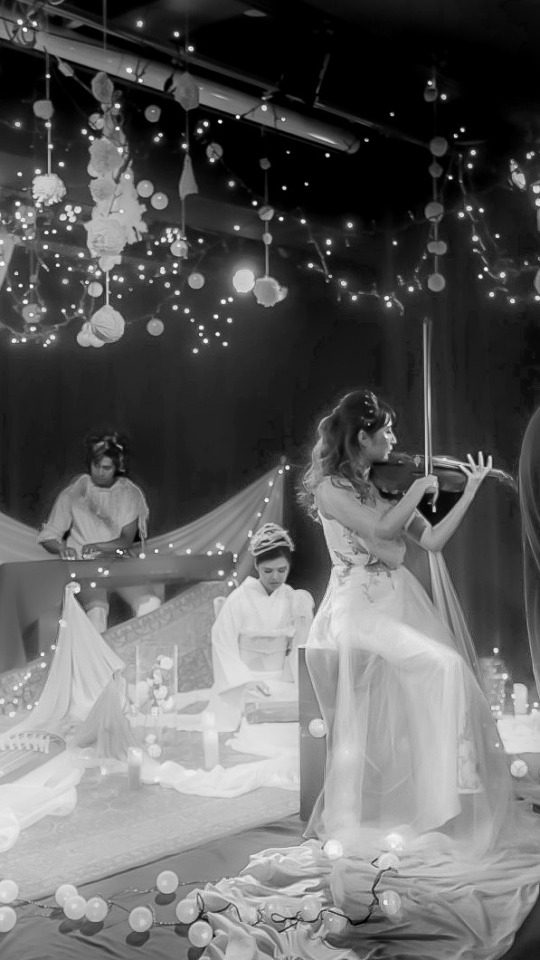




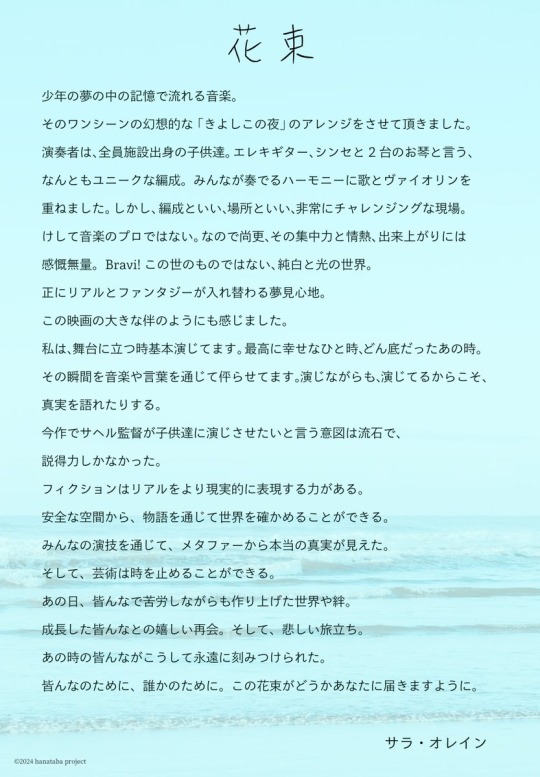

#花束#サヘル・ローズ#サラ・オレイン#Silent Night#Hanataba#orphanage#Sahel Rose#sarah àlainn#sarah alainn#shunji iwai#岩井俊二
30 notes
·
View notes
Text
Fighting in Sudan has continued for nearly two weeks since it began on April 15, when violence broke out between the country's army and a paramilitary group called the Rapid Support Forces.
The two are engaged in a power struggle over who gets to run the resource-rich nation that sits at the crossroads between North Africa, the Sahel, the Horn of Africa and the Red Sea.
Previously the warring factions were allies who united after a massive people-power revolution in 2019 to overthrow longtime Sudanese dictator Omar al-Bashir. They promised a transition to democracy — but instead toppled the country's transitional civilian government in a second coup in 2021.
Since then, they have been at odds over plans for a new transition and the integration of the RSF into the regular army. Their fight this month has led to more than 400 deaths and turned the capital's once-quiet residential streets into a disaster zone.
"This is a power projection between Sudan's two most powerful armed forces," says Ahmed Soliman, Horn of Africa researcher at British think tank Chatham House.
Here are some key things to know about the conflict and its likely impact on the region — and beyond.
Who are the generals fighting each other?
Leading the opposing forces are the Sudanese Army's Gen. Abdel-Fattah Burhan and the RSF's Gen. Mohamed Hamdan Dagalo, better known by his nickname, Hemedti.
Both served under Bashir and played key roles in the counterinsurgency that began in Sudan's Darfur region in 2003.
Burhan received military training in both Jordan and Egypt. He became the de facto ruler of Sudan as head of the Sovereign Council, a civilian-military partnership created after the popular uprising that deposed Bashir in 2019.
Dagalo rose through the ranks of the notorious Sudanese Arab Janjaweed militia, which is accused of committing atrocities during the 16-year war in Darfur.
He went on to lead Bashir's private militia, but after the mass uprising in 2019, joined Burhan in deposing his former boss.
"The clashes that we're seeing ... are in part the result of these two autocratic leaders' actions, who not only are in charge of vast armies and control much of the state's economy, but which have also been emboldened over the last three years by being key stakeholders in the political process," says Soliman.
They have, he says, "framed themselves as reformers, protectors of Sudan and guardians of its democratic transition and its revolution — falsely so."
What's the humanitarian situation?
The fighting has caused a humanitarian crisis, as people have been forced to remain largely in their homes, only occasionally able to use a pause in the battles to stock up — if they can — on essential supplies like water, food and medicine. While Khartoum has borne the brunt of the fighting, there has also been unrest in other areas, and there are concerns it could awaken conflict in Darfur.
Numerous countries, including the U.S., have closed their embassies and evacuated their personnel. The United Nations has also moved most of its foreign staff out of the country, but the chief of mission has remained in place to push for an end to the fighting.
ombings and gun battles have been taking place in the heart of the capital Khartoum, in residential neighborhoods, with buildings badly damaged.
Alyona Synenko, Africa spokesperson for the International Committee of the Red Cross, says morgues have been filling up. "There have been dead bodies that were in the streets for days and also the morgues are full with the dead," she says. "We are looking at thousands of people who were wounded and the healthcare system in Sudan is on the verge of collapse, or I think we could safely say, collapsing."
There has been a mass prison break from one of the country's main jails, which housed former members of the Bashir regime responsible for rights abuses. And the World Health Organization says one of the warring parties has seized a laboratory which contains measles, polio and cholera isolates, creating a "high risk of biological hazard."
Some 70% of hospitals are not functioning, Dr. Attiya Abdullah, secretary of the Sudan Doctors Trade Union, tells NPR. Health staff have been killed and hospitals are out of electricity or water, with no fuel for generators, he says.
Soaring food and fuel prices are exacerbating problems for ordinary Sudanese.
Tens of thousands are trying to flee to safety, mainly to neighboring Chad and South Sudan, says Faith Kasina, regional spokesperson for the U.N. refugee agency.
"At least 20,000 Sudanese have arrived in Chad and nearly 4,000 South Sudanese refugees have returned to South Sudan. ... These new arrivals are placing additional strain on these countries that already have public services and resources significantly overstretched," she says.
"The teams that we have at the border locations, in mainly South Sudan and Chad, tell us they're witnessing a very dire situation. That people are essentially coming in exhausted, coming in scared. The majority of those that are arriving are women and children... We're seeing cases where people are staying out in the open, under the trees."
What's at stake in the region and beyond?
International diplomats are struggling to bring Sudan back from the brink. Secretary of State Antony Blinken says he has spoken to both generals directly. The African Union is also involved in negotiations. But the U.N. head of mission, Volker Perthes, said this week neither side seemed serious about negotiating.
U.N. Secretary General António Guterres warned on Tuesday the violence could spread to other countries in the region, saying: "It is lighting a fuse that could detonate across borders, causing immense suffering for years, and setting development back for decades."
Sudan is surrounded by a host of fragile states, either in conflict or emerging from it. Before the fall of Bashir, the U.S. long considered Sudan a state sponsor of terrorism.
"Having a stable Sudan that looks to the United States as a partner, as a core partner, that's incredibly strategic," says Susan Stigant, who runs the Africa programs at the U.S. Institute of Peace.
And it's not only Washington that wants to see an end to the fighting. Saudi Arabia and the United Arab Emirates have financial interests in Sudan. Egypt shares a long border and a significant source of water — the Nile.
China and Sudan have long had a relationship stemming from the North African state's export of oil. Beijing is Sudan's second-biggest trading partner and has considerable investments in the country.
The Russian mercenary group Wagner, which has links to the Kremlin, also has a presence in Sudan, mainly involving guarding Russian-run mines as well as gold smuggling. The group denies any involvement in the conflict.
Russia also has other interests in the country, with Moscow planning to build a military base in Port Sudan on the Red Sea.
How might the current conflict play out?
Many analysts believe that Sudan is headed for a prolonged period of conflict, given that neither general is likely to relinquish power easily.
The many Sudanese who participated in the pro-democracy movement are devastated to see their hopes of a transition back to civilian rule imperiled, but members of the country's so-called resistance committees, which organized the 2019 and post-coup protests, say they're not giving up.
Despite multiple calls for an end to hostilities, several cease-fires have failed. The latest, announced earlier this week, has seen a lull in fighting but not a complete halt.
A number of countries have offered to mediate and get the two generals to the negotiating table. But given how far the leaders have gone in denouncing each other, it's believed they are unlikely to give up their struggle for power now.
Some analysts say this conflict has been long in the making.
Cameron Hudson, a former U.S. official who has worked on Sudan, thinks the U.S. miscalculated by putting too much trust in what the generals said about their commitment to restoring civilian control.
"To see it kind of fall apart now and the whole country kind of go up in flames, I think is, you know, is a real bad signal for the ability of the United States and its allies to help bring about these kinds of transitions, not only in Sudan but all across the region," says Hudson, now with the Center for Strategic and International Studies.
Mohamed Osman, a researcher on Sudan at Human Right Watch, says the world should have seen this coming.
"Both forces come with a long legacy of abuse," he says. "The unfortunate part is that the former government, the transitional government, failed to address this legacy of abuse, failed to embark upon security sector reform, alike with the international actors who continued to prioritize politics of appeasement."
2 notes
·
View notes
Text
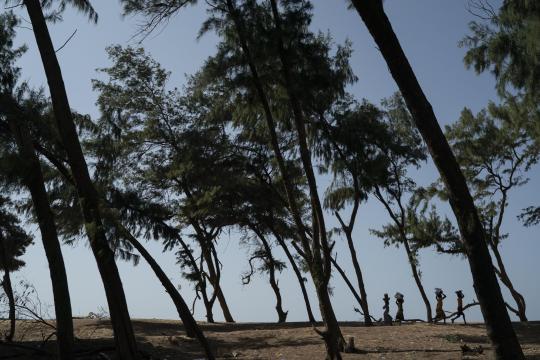
Africa's "Great Green Wall" Shifts Focus to Hold Back Desert
The project called the Great Green Wall began in 2007 with a vision for the trees to extend like a belt across the vast Sahel region, from Senegal in the west to Djibouti in the east, by 2030. But as temperatures rose and rainfall diminished, millions of the planted trees died.
Efforts to rein in the desert continue in Senegal on a smaller scale. On the western end of the planned wall, Ibrahima Fall walks under the cool shade of dozens of lime trees, watering them with a hose as yellow chicks scurry around his feet. Just beyond the green orchard and a village is a desolate, arid landscape.
You may also want to see this article by Samir Fryatt in Impakter, "The Great Green Wall: Its Status, Impacts and Need for More Support." Of possible interest to U.S. readers this project has enjoyed support from both the Bill and Melinda Gates Foundation and from that fellow at Facebook.
2 notes
·
View notes
Text

In Don't Look Up, as the meteor hurtles towards Earth, finally the fictional government decides to act, but just as hope emerges with a plan created by the best scientists, it is dashed by a billionaire businessman promising salvation, and riches to boot. The link between fact and fiction is paper thin. In the movie, Mark Rylance's character, Peter Isherwell, persuades the President that she can save the world and make trillions in profits while at it. Essentially, she can have her metaphorical cake and eat it. In real-life, climate scientists are urging systemic change that includes "a deep transformation based on a fundamental reorientation of human values, equity, behavior, institutions, economies, and technologies", while the billionaire brigade are promising us all that we can save the world without having to change the way we live. We can all have our cake and eat it too.
As the crisis gets worse, the calls to tech our way out of the mess will grow ever more fervent. Already, this is the preferred solution of the billionaire class, who see no reason to halt the megamachine that is ultimately causing the extermination event we are witnessing. We still have time, if we act immediately, to avoid complete collapse, but if we act slowly the need for drastic action will arise and this will be in the form of giant geoengineering projects. While they will be sold as a panacea for our problems, they will do more harm than good and once started, there will be no turning back. One such project is the giant space umbrella proposed by James Early in 1989. The idea is that the asteroid that killed the dinosaurs blocked out 90% of the Sun's rays, resulting in a massive temperature drop. Rather than wait for another asteroid, we could mimic the effect ourselves, the logic goes. The project entails, somehow, getting a 2,000 km-wide (1,242 mile) glass shield into position where it is balanced between the Earth and Sun's gravity. That position is around a 1.6 million km (1 million miles) away. The shield would be so enormously heavy that it would need to be made on the moon. As a work around to the weight problem, an astronomer called Roger Angel has suggested producing sixteen trillion flying space robots on Earth, each weighing one gram. These space robots would deflect sunlight by forming a cylindrical cloud 96,560 km (60,000 miles) wide. They would need to be regularly "nudged" to avoid them crashing into each other. If this doesn't sound outlandish enough, it has even been proposed that we simply move the Earth further away from the Sun. This would be done by causing an explosion equivalent to five thousand million million (yes two millions) hydrogen bombs.
As comical as these "solutions" seem in 2022, by 2042, we may see these as necessary. By far, the most widely touted of these projects, and the most likely to be attempted is solar radiation management (SRM). The aim of this project, funded partly by Bill Gates, is to mimic volcanic explosions. After Mount Pinatubo, in the Philippines, erupted in 1991, around 15 million tons of sulphur dioxide was injected into the stratosphere, between 10km and 50km (31miles) in altitude. This sulphur dioxide then mixed with water and created a layer of sulphuric acid droplets which scatter and absorb incoming sunlight. Stratospheric winds then carried this layer around the globe. The effect was that over the next fifteen months the global temperature dropped by 0.6°C (1.08°F). Of course, as this was a one-off event and CO2 continued to be pumped into the atmosphere, once the aerosols naturally dispersed, the temperature rose again. The man-made version of the Pinatubo effect is to send high altitude airplanes into the stratosphere 4,000 times a year to inject sulphur dioxide. As a bonus, the sunsets would apparently be incredible, but on the flip side, scientists claim SRM would cause a "calamitous drought" in the Sahel region of Africa, projected to be home to 196 million people by 2050. We have experienced the global impact of large volcanic eruptions elsewhere. After the Indonesian volcano, Mount Tambora blew its top in 1815, the following year, Europe experienced widespread harvest failure. Three of the four large dry spells in the Sahel region in the 20th century followed large volcanic eruptions in Alaska and Mexico the previous years. These droughts created ten million refugees and killed 250,000 people. It isn't just Africa that might suffer the effects of SRM. It has been suggested that to negate the impact on the Sahel, sulphur should be added in the tropics, but scientists warn that this will then cause a decrease in monsoon rains in South Asia, home to two nuclear powers and over a billion people already suffering the effects of drought and flooding. According to the Intergovernmental Panel on Climate Change (IPCC), SRM will also cause damage to the ozone layer which has been in a long recovery since the 1980s, due to human activities.
1 note
·
View note
Text
Monday, August 2, 2021
Frustration as Biden, Congress allow eviction ban to expire (AP) Anger and frustration mounted in Congress as a nationwide eviction moratorium expired at midnight Saturday—one Democratic lawmaker even camping outside the Capitol in protest as millions of Americans faced being forced from their homes. Lawmakers said they were blindsided by President Joe Biden’s inaction as the deadline neared. More than 3.6 million Americans are at risk of eviction, some in a matter of days. The moratorium was put in place by the Centers for Disease Control and Prevention as part of the COVID-19 crisis when jobs shifted and many workers lost income. The eviction ban was intended to prevent further virus spread by people put out on the streets and into shelters. Congress approved nearly $47 billion in federal housing aid to the states during the pandemic, but it has been slow to make it into the hands of renters and landlords owed payments.
Breakneck pace of crises keeps National Guard away from home (AP) In the searing 108-degree heat, far from his Louisiana health care business, Army Col. Scott Desormeaux and his soldiers are on a dusty base near Syria’s northern border, helping Syrian rebel forces battle Islamic State militants. It’s tough duty for the soldiers. But their deployment to the Middle East last November is just a small part of the blistering pace of missions that members of the Louisiana National Guard and America’s other citizen-soldiers have faced in the past 18 months. Beyond overseas deployments, Guard members have been called in to battle the COVID-19 pandemic, natural disasters and protests against racial injustice. For many, it’s meant months away from their civilian jobs and scarce times with families. While Guard leaders say troops are upbeat, they worry about exhaustion setting in and wonder how much longer U.S. businesses can do without their long-absent workers. “This past year was an extraordinary one for the National Guard,” said Gen. Dan Hokanson, chief of the National Guard Bureau. Does he worry about exhaustion setting in? “That’s something I’ve been very concerned with right from the start.”
Western Wildfires May Take Weeks To Months To Contain (NPR) Pockets of the American West continued to burn over the weekend, as another nine large fires were reported on Saturday in California, Idaho, Montana and Oregon. The 87 fires still active in 13 states have consumed more than 1.7 million acres. Just shy of 3 million acres have been scorched since the start of 2021, with months left in what experts predict will be a devastating fire season. In southern Oregon, the Bootleg Fire has become the largest active blaze in the country. The 413,000-acre inferno was contained at 56%, as of Saturday night. A fire line has been constructed around the entire perimeter, ranging from 100 to 150-feet wide between the burn and unburned areas.
Bacon may disappear in California as pig rules take effect (AP) Thanks to a reworked menu and long hours, Jeannie Kim managed to keep her San Francisco restaurant alive during the coronavirus pandemic. That makes it all the more frustrating that she fears her breakfast-focused diner could be ruined within months by new rules that could make one of her top menu items—bacon—hard to get in California. “Our number one seller is bacon, eggs and hash browns,” said Kim, who for 15 years has run SAMS American Eatery on the city’s busy Market Street. “It could be devastating for us.” At the beginning of next year, California will begin enforcing an animal welfare proposition approved overwhelmingly by voters in 2018 that requires more space for breeding pigs, egg-laying chickens and veal calves. National veal and egg producers are optimistic they can meet the new standards, but only 4% of hog operations now comply with the new rules. Unless the courts intervene or the state temporarily allows non-compliant meat to be sold in the state, California will lose almost all of its pork supply, much of which comes from Iowa. Animal welfare organizations for years have been pushing for more humane treatment of farm animals but the California rules could be a rare case of consumers clearly paying a price for their beliefs.
Why are so many migrants coming to one of Europe’s smallest countries? Blame Belarus, officials say. (Washington Post) Europe’s newest migration crisis is unfolding in one of its most unlikely places. Lithuania, a Baltic nation roughly the size of West Virginia with fewer than 3 million residents, hasn’t been known as a destination for undocumented immigrants: Each year, the country sees roughly 70 people unlawfully cross its border with Belarus. In July, the number skyrocketed to more than 2,600, consisting mostly of immigrants from Iraq and sub-Saharan Africa. Officials expect the numbers to grow in the coming weeks. This new flow of people did not begin organically, Lithuanian and European Union officials say. Instead, they say, it is the result of an audacious plan by Belarusian President Alexander Lukashenko to weaponize migration in response to E.U. sanctions. In June, Lukashenko threatened to allow human traffickers and drug smugglers to stream into Europe. E.U. officials say they have evidence that his government is also encouraging immigrants to travel there: coordinating with a Belarusian travel agency to offer tourist visas, setting up flights and then transporting people from Minsk to the Lithuanian border. Lithuania, which has virtually no experience with large numbers of immigrants, has scrambled to construct a barbed wire fence along the border.
Thousands protest against COVID-19 health pass in France (Reuters) Thousands of people protested in Paris and other French cities on Saturday against a mandatory coronavirus health pass for entry to a wide array of public venues, introduced by the government as it battles a fourth wave of infections. It was the third weekend in a row that people opposed to President Emmanuel Macron’s new COVID-19 measures have taken to the streets, an unusual show of determination at a time of year when many people are focused on taking their summer break. The number of demonstrators has grown steadily since the start of the protests, echoing the “yellow vest” movement, that started in late 2018 against fuel taxes and the cost of living. An interior ministry official said 204,090 had demonstrated across France, including 14,250 in Paris alone. This is about 40,000 more than last week.
Turkey evacuates panicked tourists by boat from wildfires (AP) Panicked tourists in Turkey hurried to the seashore to wait for rescue boats Saturday after being told to evacuate some hotels in the Aegean Sea resort of Bodrum due to the dangers posed by nearby wildfires, Turkish media reported. Coast guard units led the operation and authorities asked private boats and yachts to assist in evacuation efforts from the sea as new wildfires erupted. A video showed plumes of smoke and fire enveloping a hill close to the seashore. The death toll from wildfires raging in Turkey’s Mediterranean towns rose to six Saturday after two forest workers were killed, the country’s health minister said. Fires across Turkey since Wednesday have burned down forests and some settlements, encroaching on villages and tourist destinations and forcing people to evacuate. In one video of the Bodrum fire filmed from the sea, a man helping with the evacuations was stunned at the speed of the fire, saying “this is unbelievable, just unbelievable. How did this fire come (here) this fast in 5 minutes?”
Afghans flee (NYT) A mass exodus is unfolding across Afghanistan as the Taliban press on with a military campaign and the U.S. withdraws. At least 30,000 Afghans are leaving each week and many more have been displaced. The Taliban have captured more than half the country’s 400-odd districts, according to some assessments, sparking fears of a harsh return to extremist rule or a civil war. The sudden flight is an early sign of a looming refugee crisis, aid agencies warn.
As the Taliban closes in, Afghan forces scramble to defend prisons holding thousands of militants (Washington Post) Huddled in brightly lit yards late one recent night, hundreds of inmates taunted a team of about a dozen special forces who were rounding the walls along the top of Kunduz prison. The appearance of elite soldiers was an anomaly, a sign to the prisoners that something was happening. “What’s going on?” they shouted. “Is tonight going to be our last night in here? Taliban fighters planned to storm the compound that evening, according to information gathered by local intelligence officers. Government forces hoped the show of force would spur prisoners—some in possession of smuggled cellphones used to communicate with the Taliban—to wave off the attack. Without enough fighters to hold the city’s front lines and reinforce the prison, the special forces’ move was a gamble. But it appeared to work: The night passed without incident. As Taliban militants close in on Afghanistan’s provincial capitals, they are inching closer to central prisons that house around 5,000 of their fellow fighters, leaving the government scrambling to secure the detention facilities. If just a fraction of the detainees were to escape, Afghan security officials warn, it would hand the militants a significant advantage on the battlefield, where they are already making steady gains.
Burkina Faso sees more child soldiers as jihadi attacks rise (AP) Awoken by gunshots in the middle of the night, Fatima Amadou was shocked by what she saw among the attackers: children. Guns slung over their small frames, the children chanted “Allahu akbar,” as they surrounded her home in Solhan town in Burkina Faso’s Sahel region. Some were so young they couldn’t even pronounce the words, Arabic for “God is great,” said the 43-year-old mother. “When I saw the kids, what came to my mind was that (the adults) trained these kids to be assassins, and they came to kill my children,” Amadou told The Associated Press by phone from Sebba town, where she now lives. She and her family are among the lucky ones who survived the June attack, in which about 160 people were killed—the deadliest such assault since the once-peaceful West African nation was overrun by fighters linked to al-Qaida and the Islamic State about five years ago. As that violence increases, so too does the recruitment of child soldiers. The number of children recruited by armed groups in Burkina Faso rose at least five-fold so far this year, according to information seen by the AP in an unpublished report by international aid and conflict experts.
Behind the Rise of U.S. Solar Power, a Mountain of Chinese Coal (WSJ) Solar panel installations are surging in the U.S. and Europe as Western countries seek to cut their reliance on fossil fuels. But the West faces a conundrum as it installs panels on small rooftops and in sprawling desert arrays: Most of them are produced with energy from carbon-dioxide-belching, coal-burning plants in China. Concerns are mounting in the U.S. and Europe that the solar industry’s reliance on Chinese coal will create a big increase in emissions in the coming years as manufacturers rapidly scale up production of solar panels to meet demand. That would make the solar industry one of the world’s most prolific polluters, analysts say.
Americans Spend Nearly 60 Billion Hours a Year on Google (PC Magazine) Collectively, Americans spent 57.3 billion hours on Google per year. Its video equivalent, YouTube, comes in second with 29.6 billion hours, followed by Facebook with 9.7 billion hours.
1 note
·
View note
Text

We had desert roses as long as I can remember. And decided to search more info and I was surprised!
Adenium obesum is a species of flowering plant in the dogbane family, Apocynaceae, that is native to the Sahel regions, south of the Sahara (from Mauritania and Senegal to Sudan), and tropical and subtropical eastern and southern Africa and Arabia. Common names include Sabi star, kudu, mock azalea, impala lily and desert rose.
Adenium obesum produces a sap in its roots and stems that contains cardiac glycosides. This sap is used as arrow poison for hunting large game throughout much of Africa and as a fish toxin.
Description from Wikipedia
12 notes
·
View notes